Table of Contents
1. Project Overview
2. Project Vision
3. Features and Advantages
- Sei Network in-depth analysis: a fast Layer1 public chain designed for trading, can it become a decentralized “NASDAQ”?
- Why are we still optimistic about BTC’s performance in the second half of the year? – LK Venture Report
- Latest overview of the biggest Bitcoin holders
(1) Speed
(2) Security
(3) Scalability
(4) High Customizability
(5) Tamper-Proof
(6) All Data is Publicly Transparent
(7) Supports Smart Contracts
4. Development History
5. Team Background
6. Financing Information
7. Project Architecture
(1) Network
(2) Consensus Algorithm
(3) DAG
(4) Synchronization
(5) Transactions
(6) Node Operating Requirements
8. Development Achievements
(1) Project Progress
(2) Basic Data
9. Economic Model
(1) Token Economy (2) Token Equity
(3) Incentive Mechanism
10. Industry Analysis
11. Risks and Opportunities
12. Collaboration Plan
1. Project Overview
TFSC (Transformers Chain) is a completely decentralized public chain and a high-performance distributed system with continuous expandable transaction capabilities that anyone can participate in.
Based on the special Raindrop Consensus Protocol (RDCP), it realizes the ability to parallel process on-chain transactions by multiple block producers. The number of concurrent block producers can be freely developed in a decentralized manner through its incentive layer protocol network as the network scale expands.
2. Project Vision
Decentralization, autonomy, equality, and freedom are the development concepts of TFSC. TFSC hopes to attract countless Web3.0 entrepreneurs to change the world with its sun-like powerful gravity.
3. Features and Advantages
To meet the characteristics of a high-performance public chain, TFSC focuses on the following core concepts:
(1) Speed
TFSC is written in C/C++, ensuring its cross-platform and efficient processing capabilities. In TFSC, transaction confirmation and on-chain speed are very fast, with consensus and confirmation reached in less than 1 second.
(2) Security
In the consensus layer, TFSC uses a lot of VRF protocol, Byzantine fault-tolerant mechanism, elliptic curve signature algorithm, and independently developed Raindrop consensus protocol. While ensuring security, it also ensures that the weights of each node are equal. Even if some nodes have problems, it will not cause too much impact.
(3) Scalability
TFSC uses a dual VRF random number algorithm to select multiple candidates for block production at the same timestamp, and continuously expands the number of candidates as the network grows. Scalability ensures that the TFSC network can handle the increasing transaction volume due to user demand while providing higher bandwidth capacity. To meet these network needs, TFSC will enable multiple side-chain functions.
(4) High Customization
Business chains can operate independently according to different transaction types or business entities. The TFSC mainnet is powerful and its application scope can be expanded infinitely.
(5) Tamper-proof
TFSC is a highly decentralized distributed ledger, and it is almost impossible to tamper with data.
(6) All Data is Public and Transparent
Any node can view the account balance and transaction activity of other nodes. Verification nodes are distributed around the world, and everyone can participate in accounting and maintaining all data on the blockchain.
(7) Supports Smart Contracts
TFSC fully supports EVM, which means that smart contracts deployed on Ethereum can be executed on TFSC without any modification or with only slight adjustments. TFSC will also support WASM virtual machine contracts in the near future.
IV. Development History
June 25, 2022: TFSC opens beta testnet
July 6, 2022: Releases $TFSC economic model
September 16, 2022: Launches data visualization website explorer.tfsc.io
April 9, 2023: TFSC opensourced most of its code repositories on Github
May 2, 2023: TFSC node deployment is open to everyone
May 18, 2023: TFSC launches fundraising seed round, ending on June 10
V. Team Composition
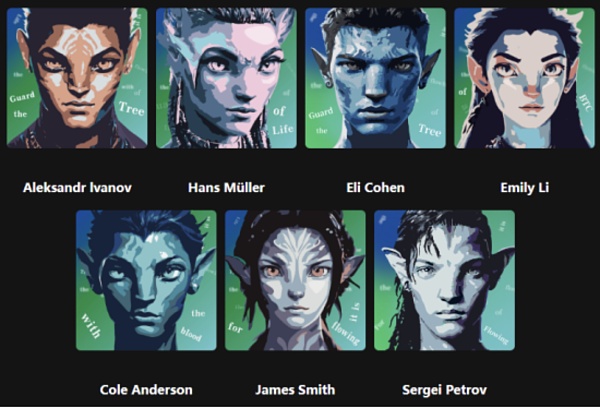
Aleksandr Ivanov: Technical founder
Hans Müller: Architect
Eli Cohen: Core developer
Emily Li: Core developer
Cole Anderson: Core developer
James Smith: Core developer
Sergei Petrov: Core developer
The project is currently operated anonymously, but based on the disclosed founding team introduction and community operation, core members should come from countries such as Russia, Germany, and China.
VI. Financing Information
TFSC currently has no financing information.
VII. Project Architecture
(1) Network
TFSC adopts a fully connected decentralized distributed P2P network structure. TFSC connects to the blockchain network through P2P. In the blockchain network, all nodes are equal, acting as both clients and servers.
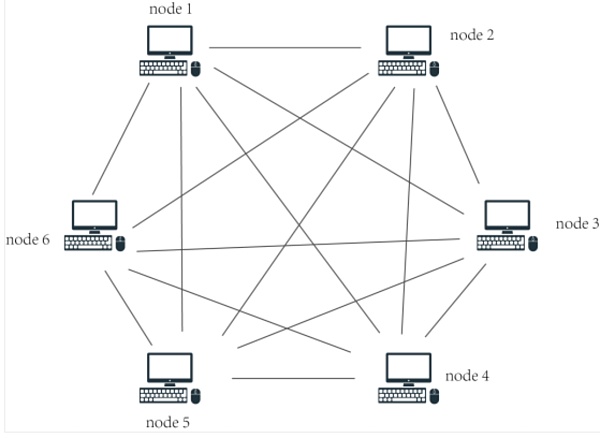
Each validation node is marked with a unique ID in the node list to ensure the authenticity of the validation node in the network. By verifying the node list data, validation nodes that meet the conditions are gathered into the validation pool. Discrete random functions are used to randomly select the block validation nodes, ensuring smooth and fair node selection, thereby avoiding the unfairness caused by block validation.
(2) Consensus Algorithm
TFSC uses the Raindrop consensus protocol as the consensus mechanism at the consensus layer. The mainstream consensus mechanism cannot balance efficiency and decentralization. Compared with traditional POW, the Raindrop consensus protocol is more efficient and does not produce computing power competition. Each node in the network has its own unique node ID, and each node in the main network is selected and verified through a discrete random number.
You can understand that each transaction in the network can be regarded as a drop of rain, and the ripple caused by the drop of rain is similar to the verification of each transaction in the network. The entire chain marketing process is the process of hundreds or even thousands of transactions reaching network consensus simultaneously under certain conditions.
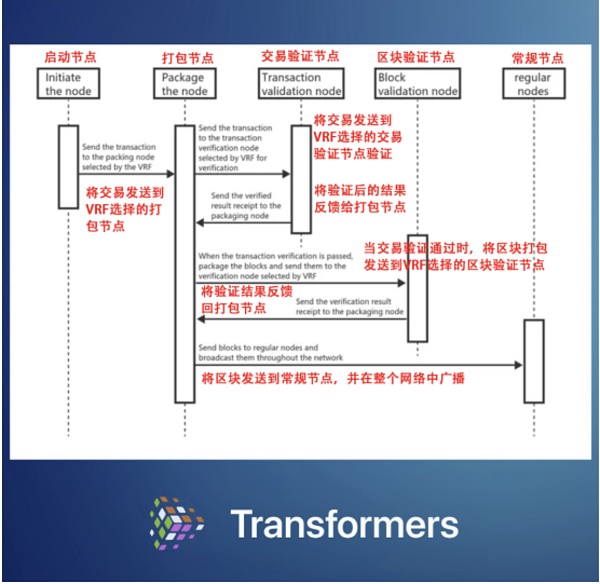
(3) DAG
DAG (Directed Acyclic Graph) is the underlying ledger structure of TFSC. “Directed” means directed, “Acyclic” means non-cyclic and non-returning, and DAG means a directed graph that cannot return to the original point from any vertex.
Obviously, the Merkle tree belongs to a directed tree structure, and each vertex in the tree can only point to the previous vertex, and the entire data has an obvious flow direction. The DAG structure allows each vertex to point to multiple previous vertices, and the entire data flow has a clear direction. Another data structure is a directed graph, which differs from DAG in that the directed graph allows data to flow back, and the data flow direction in the entire structure is not very clear. The differences between the three are shown in the figure.
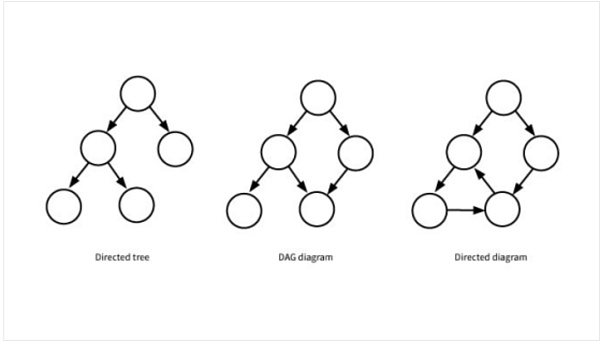
It is difficult to significantly improve scalability while ensuring decentralization and security in the context of blockchain, making it difficult to commercialize. DAG is theoretically decentralized, and if the network is powerful enough, security can also be guaranteed. More importantly, scalability can be greatly improved. Distributed databases using DAG technology can greatly improve transaction throughput and minimize transaction fees.
(4) Synchronization
Fast and reliable synchronization is the basis of TFSC’s ultra-high throughput.
Synchronization refers to the mechanism used to maintain consistency of content between two or more databases, files, modules, or threads. Consensus and synchronization are essential in blockchain. The synchronization process ensures the consistency of data across the entire blockchain network, ensuring the verifiability of data across the network. At the same time, by preparing the data required for consensus in advance without affecting consensus, the consistency of data across the network is achieved, increasing the success rate of transactions.
On TFSC, block production is a passive behavior, and blocks are only generated when transactions occur, not through a scheduled block production mechanism. Any user can synchronize all data blocks on the main network. During operation, it periodically broadcasts its highest block height to other nodes. When a node receives a broadcasted block height from another node, it compares it with its own block height. If its block height is behind, the block download process is initiated. TFSC’s synchronization ensures the consistency of data across the entire network, providing a secure foundation for consensus and ensuring the security and robustness of the TFSC network.
(5) Transactions
In order to avoid user fluctuations and ensure stability in blockchain, TFSC needs to pledge a certain amount of coins to join the network. The pledged coins can be released from pledge after a certain period of time, and the pledged amount is 1000 TFSC, which will be transferred to a dedicated account.
The pledged coins can be released from pledge after 30 days. As is well known, there is a reward mechanism in blockchain, which differs from mining algorithms. TFSC does not use proof of work, but creatively uses the application mechanism algorithm. Users can participate in profit sharing by investing a minimum of 35 TFSC, and the more they invest, the more they earn.
(6) Node operating requirements
① Hardware requirements
CPU: Recommended Intel Pentium CPU series or above, with 8 or more cores.
Memory: Recommended 16G or more
Hard drive: Recommended 500G with NVME protocol
Bandwidth: Upstream and downstream 100Mbps
② Software Requirements
Operating System: Runs on CentOS 7 and Ubuntu 22.04 desktop amd64 system.
Eight. Development Results
(1) Project Progress
One of the highlights of TFSC is its Raindrop Consensus Protocol (RDCP). Compared with traditional POW, the Raindrop Consensus Protocol is more efficient and does not generate computing power competition. Each node in the network has its own unique node ID, and each node in the main network is selected and verified through discrete random numbers.
In one year, the TFSC client has been updated dozens of times, and the TFSC network has proven that it can efficiently handle a large number of transactions in a fully decentralized state.
The current latest version of the TFSC client program is v0.28.0.
In addition, TFSC has also launched the ecological wallet project TFSC Wallet and Tick Wallet.
(2) Basic Data
Twitter: 14,000
Discord: 7,921, inactive
Telegram: 8,517, inactive
Validators/network nodes: 118/139
Pledge rate: 2.26%
Current pledge annual interest rate: 22%
Nine. Economic Model
(1) Token Economy

The above picture is the token economy officially released in the early stage. From the picture, it can be seen that the total amount of $TFSC designed in the early stage is 200 million, of which: team 3%, pre-destruction 6%, global development 10%, ecological development fund 5%, community airdrop 2%, strategic cooperation 2%, node incentive 35%, consultant 1%, issuance quantity 35%, activity airdrop 1%
However, in the latest disclosed token economy, the data has been adjusted. The initial total amount of TFSC tokens is 70 million, as follows:
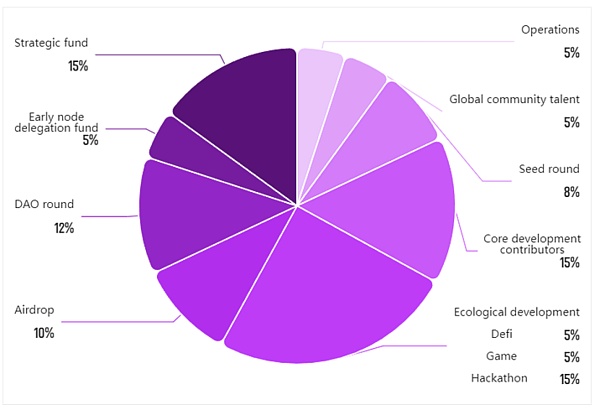
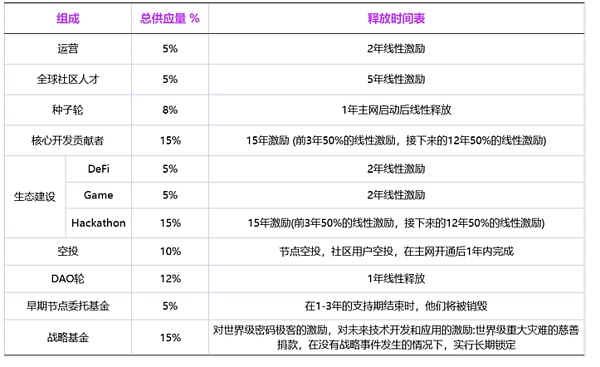
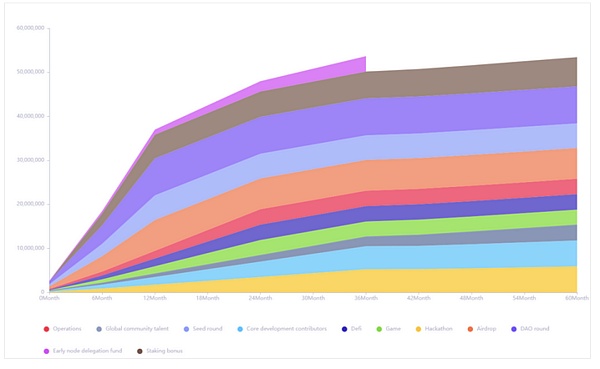
(2) Token Equity
Transformers is a decentralized high-performance public chain system. By default, all delegates and validators in the network have no interests and cannot participate in any work in the Transformers network. They need to lock a certain amount of TFSC to obtain relevant rights in the Transformers network.
Transformers’ pledge is to participate in the network by locking a certain amount of TFSC. Pledging is to increase the cost of operating the Transformers network for a small number of people, which can effectively prevent malicious nodes from using the Transformers network, greatly increasing the cost of witch attacks, and making it difficult for wrongdoers to gain illegal income from the network.
The minimum pledge amount for the trustee of the Transformers network is 35 TFSC, and the maximum equity delegation that validators can accept is 65,000 TFSC. At the same time, validators and trustees will share the incentives of the Transformers network together. It should be noted that if the validator selected by the trustee is in an abnormal state in the network, it will cause a loss of income for the trustee. Validators will also suffer serious losses. They are risk-sharing and return-sharing.
The validator’s pledge amount is 1,000 TFSC, and at least 10,000 TFSC must be pledged to the validator. After meeting the above conditions, the validator can obtain Transformer’s entry permit and all network rights. It should be noted that the maximum pledge amount accepted by a single validator is 65,000 TFSC. When the pledge amount reaches the maximum value, the validator will not be able to delegate the pledge.
The pledge freeze period of the validator in the network is 30 days, which does not affect the pledge freeze period of the customer. After meeting the above pledge conditions, the validator will be confirmed as active, and inactive validators will not receive any benefits from the network.
(3) Incentive Mechanism
To promote the long-term sustainability of its system, achieve a healthy autonomous economic cycle, and ensure its long-term security and decentralization characteristics, Transformers has established a long-term incentive mechanism for its network participants.
The core participants of Transformers are clients and validators, which provide a secure and decentralized network foundation for various interactive behaviors on Transformers. Rewards are issued based on the initial circulating amount of the founding block. Inflation will decrease or reverse according to time and the total equity elasticity of the validation cluster.
Transformers has formulated a destruction protocol. In the process of maintaining the ecological and economic balance and development, the system automatically destroys the founding block shares and 100% of the validation node gas, thereby achieving Transformers’ long-term economic stability.
X. Industry Analysis
Public chains are currently a topic of interest in the web3 industry. Good new public chain projects are basically valued at a minimum of US$1 billion, and any public chain projects have huge potential and are worth attention.
The TFSC raindrop consensus protocol is different from POS and POW, with a strong narrative and emphasis on decentralization and equality for all. The project has the potential to cause a certain amount of market response.
Eleven, Risks and Opportunities
The TFSC raindrop consensus protocol is unique and innovative, and it is also a new public chain project that is still in the test network stage. The reward mechanism is clear. There are community airdrops and activity airdrops that can be participated in early. In addition, it is carrying out a partner recruitment plan (see the following text), and eligible teams or individuals can join.
However, because the project is relatively new and information is scarce, the team is anonymous and cannot be fully trusted. How much value it can create and how many high-quality projects it can attract for deployment are still unknown. Whether public chain projects are still popular depends on the market environment, and investment carries risks.
In summary, a professional team that is looking for suitable projects and co-building partners is still in the early stage. You can continue to pay attention to its development dynamics this year.
Twelve, Cooperation Plan
On May 5, 2023, the team tweeted to recruit global partners, including:
(1) Technical partners: looking for individuals or DAO organizations with rich experience in blockchain technology, distributed systems, etc., to accelerate TFSC’s next technological development.
(2) Community building partners: looking for individuals and DAOs with rich experience in community building to establish an open, inclusive, and active TFSC community.
(3) Media partners: looking forward to working with experienced media to jointly promote the core technology and development process of TFSC, expand its popularity and influence.
(4) Investment partners: will choose some investment partners with rich investment experience in the field of blockchain and digital assets to create high-quality web3 entrepreneurial projects related to TFSC and TFSC ecology.
(5) Ecological partners: looking for individuals or DAO organizations in other industries to jointly build a more open, fair, and efficient ecosystem to meet the needs of different scenarios.
At the current stage, the co-builders of TFSC can start with the following three aspects:
1. Deeply understand the vision, technology, and value of TFSC.
2. Participate in node deployment during the TFSC test phase: node users are very important to TFSC. Participating in node deployment can help improve understanding and familiarity with TFSC, and provide experience for subsequent development, deployment, and promotion. Therefore, institutions that have participated in the deployment of TFSC test phase nodes will receive higher scores.
3. Having global community, media, or KOL resources in ecological promotion: Community, media, and KOL resources are very important for promoting and developing blockchain projects. If an individual or organization has accumulated these resources in ecological expansion, it can better promote and publicize TFSC, thus obtaining higher scores.
Like what you're reading? Subscribe to our top stories.
We will continue to update Gambling Chain; if you have any questions or suggestions, please contact us!